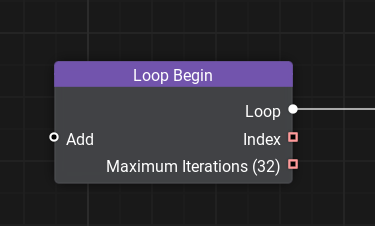Loop Begin Node

Description
Loops make it possible to repeat an arbitrary set of operations multiple times. The Loop Begin node enables you to create variables to which you can write data via the Loop End node and again read this data in Loop Begin. In order for the two nodes to work together in a loop with the same set of variables, they should be connected together.
- Maximum Iterations - number of iterations in the loop.
- Index - current iteration index.NoticeThe loop begins from 0, so if it has 16 iterations, the index of the last one will be 15.
Last update:
2022-10-10
Help improve this article
Was this article helpful?
(or select a word/phrase and press Ctrl+Enter)